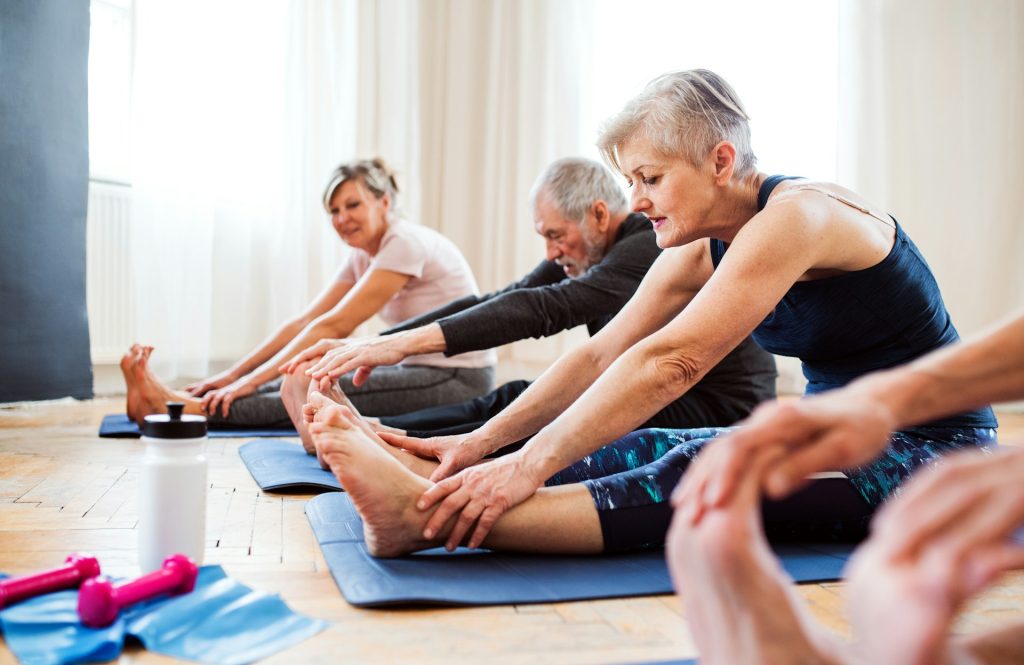Maintaining an active lifestyle is crucial for seniors, especially after finishing physical therapy. Staying active helps in keeping the body strong and healthy. Post-therapy fitness plans can make a big difference in the overall well-being of older adults. It’s about more than just exercise; it’s about living a full and happy life.
Physical activity can reduce the risk of health issues like heart disease and arthritis. It aids in improving balance and flexibility, which lowers the chance of falls. Exercise also boosts mood and energy levels. For seniors, staying fit means gaining more independence and enjoying daily activities without pain or difficulty.
Creating a fitness plan after therapy involves looking at the person’s physical abilities and setting achievable goals. Different types of exercises, like strength training and low-impact cardio, can be tailored to fit individual needs. Staying consistent with the fitness routine is also key. Building a support system and using technology to track progress can help keep motivation high.
Keeping seniors active through effective fitness plans improves their quality of life. It ensures they remain strong, healthy, and engaged in their daily routines. A well-rounded plan brings numerous health benefits and enhances overall happiness.
Understanding the Importance of Post-Therapy Fitness
Why Keeping Active Matters for Seniors
Staying active is crucial for seniors. Regular physical activity helps maintain muscle strength and flexibility. It also boosts cardiovascular health, making it easier to perform daily activities without getting tired. Keeping active allows seniors to maintain their independence and reduces the risk of chronic diseases like diabetes and hypertension. Additionally, physical activity enhances mental well-being, improving mood and decreasing feelings of anxiety and depression.
Benefits of Physical Activity After Therapy
After completing therapy, continuing with physical activity offers several benefits.
– Improved Recovery: Exercise helps maintain the progress made during therapy. It strengthens muscles and joints, which aids in a faster recovery.
– Enhanced Mobility: Regular exercise keeps seniors flexible and mobile, making it easier to move around and perform daily tasks.
– Reduced Pain: Physical activity can ease chronic pain and stiffness, especially in areas like the hips, knees, and lower back.
– Mental Health Benefits: Staying active helps release endorphins, improving mood and reducing stress. This contributes to a better quality of life.
Creating a Safe and Effective Fitness Plan
Assessing Physical Capabilities
Before starting a new fitness plan, it’s important to assess physical capabilities. This includes understanding any limitations that may exist due to age, health conditions, or previous injuries. Consulting with a healthcare provider can give a clear picture of what exercises are safe and effective. It’s important to start slowly and choose activities that match one’s abilities.
Setting Realistic Goals
Setting achievable goals is key to creating a successful fitness plan. Goals should be specific, measurable, and easy to track.
– Short-term Goals: These can be simple, like walking for 10 minutes a day or doing light stretching exercises.
– Long-term Goals: These might include increasing activity levels, improving balance, or gaining strength.
Writing down these goals and creating a plan to achieve them makes it easier to stay focused. Tracking progress helps in making necessary adjustments to keep moving towards the goals safely.
A well-thought-out fitness plan considers the individual’s current health and adjusts over time, allowing for steady improvement and sustained physical activity.
Types of Exercises Suitable for Seniors
Strength Training and Flexibility Workouts
Strength training is essential for maintaining muscle mass and bone density, which tend to decrease with age. Light weights, resistance bands, and bodyweight exercises like squats and wall push-ups are safe options. These exercises help build strength without putting too much strain on the body.
Flexibility workouts are equally important for seniors. Stretching exercises, such as yoga or simple stretches, improve flexibility and mobility. These activities keep the muscles and joints limber, reducing the risk of injuries and making daily movements easier.
Low-Impact Cardio Options
Cardio exercises improve heart health and increase stamina. Low-impact options are gentle on the joints but still effective in boosting cardiovascular fitness.
– Walking: A daily walk can improve circulation and boost energy levels.
– Swimming: Swimming provides a full-body workout that is easy on the joints.
– Cycling: Using a stationary bike is a low-impact way to get the heart pumping.
– Dancing: Gentle dance classes can be fun and beneficial for heart health.
These activities keep seniors active and engaged without putting too much stress on their bodies.
Tips for Staying Motivated and Consistent
Building a Support System
A strong support system can make a big difference in staying motivated. Having friends, family, or a workout buddy encourages consistency. Group exercises or fitness classes offer social interaction, making exercise more enjoyable. Supportive environments boost morale and make it easier to stick to the fitness plan.
Using Technology and Tools for Monitoring Progress
Technology can be a useful tool in tracking fitness progress. Fitness trackers and apps can monitor steps, heart rate, and activity levels. Using these tools helps in setting and achieving goals. They provide visual progress, which can be motivating. Simple tools like calendars or journals can also be effective in keeping track of workouts and celebrating milestones.
Conclusion
Keeping seniors active after therapy is vital for their overall health and well-being. A well-planned fitness routine that includes strength training, flexibility workouts, and low-impact cardio can aid in maintaining and improving physical health. Setting realistic goals based on individual capabilities and tracking progress for motivation is also important.
Staying active enhances the quality of life, offering physical and mental health benefits. Having a support system and using technology makes it easier to stay on track. It’s never too late to start a fitness plan that keeps seniors healthy and happy.
If you’re looking for personalized fitness plans for seniors, Eightlimfit offers tailored health and wellness programs. Join us to keep active and enjoy a fulfilling life. Visit our website to learn more and get started today.

